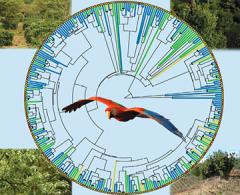
This Article From Issue
November-December 2014
Volume 102, Number 6
Page 405
DOI: 10.1511/2014.111.405
To the Editors:
With regard to Trevor Cox’s article "Quietest Places in the World" (September–October), any member of the National Speleological Society, based in Huntsville, Alabama, can take the author to places underground in caves where it is so quiet that not only can one hear one’s heart beating, one can hear the blood coursing through one’s arteries and veins. The quietest places in caves are low, tunnel-like passages, where there is little space between you and the surrounding rock.
John H. Hall, Jr.
Shenandoah, TX
Dr. Cox responds:
Maybe I should take up Hall’s offer next time I’m Stateside. When I used to go potholing as a teenager, I remember that on every trip the leaders would ask us to turn off our lights to experience the darkness. Often, it would not be completely quiet, because these English cave systems were wet, and the sound of running water carries long distances underground. There was certainly little chance of hearing silence with the lights on, because of the hissing from the old-fashioned carbide lamps.
After listening to the silence in the tight passageways, Hall and I could explore how these spaces change the timbre of voices, adding what acousticians call
coloration
to the sound. Elsewhere in
The Sound Book, I look at theories that cave paintings were placed on walls where the acoustics were particularly remarkable. The suggestion is that the acoustics of the caves could embellish storytelling; for example, strong distinct reflections could help impersonate hoofed animals.

American Scientist Comments and Discussion
To discuss our articles or comment on them, please share them and tag American Scientist on social media platforms. Here are links to our profiles on Twitter, Facebook, and LinkedIn.
If we re-share your post, we will moderate comments/discussion following our comments policy.